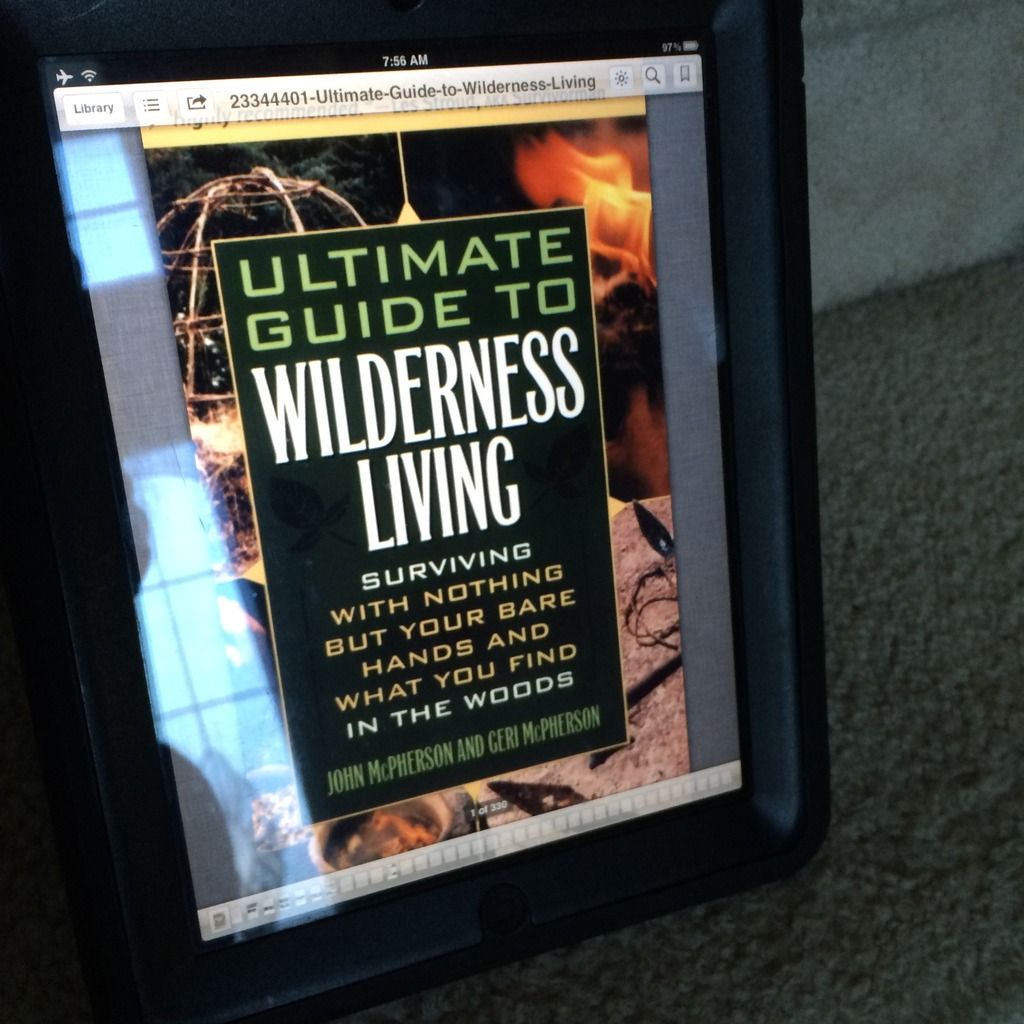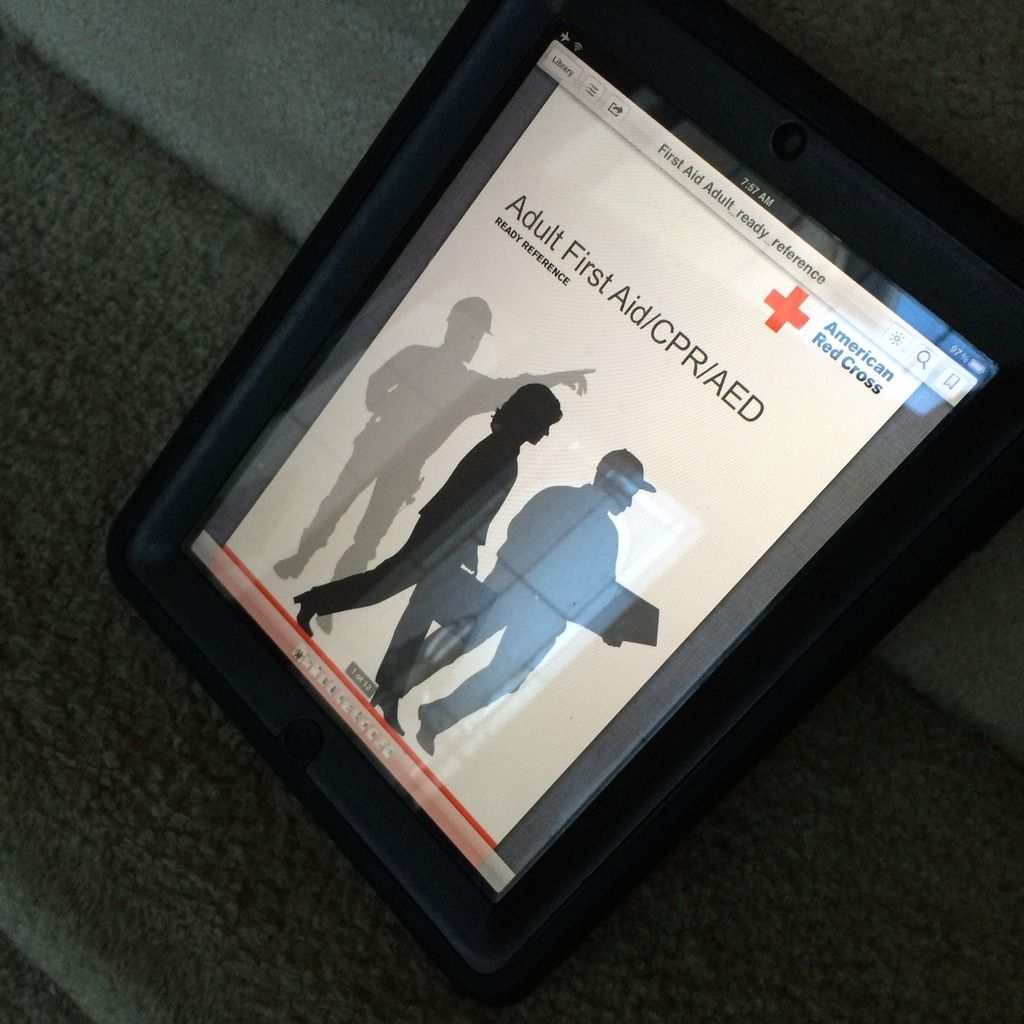Well, I was going through some stuff in my office the other day, and came across my old Gen 1 IPad. I haven't even seen this thing in at least a year, and even then the software had done its final update, and it was slow and most of the newer apps wouldn't run on it. But here it was in perfect, day one condition. It was perfectly protected by an Otter box since the day I bought it. Then it struck me. Just like i have a folder of PDFs on my PC, and my binder, I could have PDFs and critical documents on this iPad.
Yeah sure, if we get hit by an EMP it's useless. But for any other situation its perfect. Its light and portable, backlit for night reading. Even though its too slow for the new app, I got the biggest drive available at the time when i bought it, so it will hold a truckload of books.
Well, I wiped its storage clean and restored it to the base software without Apps, and went to work. I searched the web for copies of every doc, manual, and book. I pulled together all the info I already have in my files. I went to the FEMA web site and downloaded the CERT class syllabus. I was able to find a copy of the military's SERE training manual. I located several other preparedness, survival, and crisis management manuals in PDF form. By the way, the US government spends a LOT of money on FEMA and similar agencies. Did you know the CIA has a lock picking manual? and its on the web to download for FREE! Its amazing all of the reports and manuals are available for free if you just dig through their websites.
 I downloaded the service manuals on all my Coleman and Goal Zero gear. Schematic and exploded views of how things like my Dual Fuel lanterns and stove can be invaluable when field servicing them. I revisited the sites for all my guns and installed their complete service manuals. Information on my solar panels, and my crossbow. I have complete schematics for all my electronics and communications gear. I have high resolution road and waterway maps of my state and all the surrounding states, courtesy of the US Department of Interiors.
I downloaded the service manuals on all my Coleman and Goal Zero gear. Schematic and exploded views of how things like my Dual Fuel lanterns and stove can be invaluable when field servicing them. I revisited the sites for all my guns and installed their complete service manuals. Information on my solar panels, and my crossbow. I have complete schematics for all my electronics and communications gear. I have high resolution road and waterway maps of my state and all the surrounding states, courtesy of the US Department of Interiors. I was even able to find the manufacturers service manual for my Ford F150. Keeping it running could be critical during a crisis, since its my primary means of escape. I have the manuals for generators and schematics of how businesses work like gas stations, that could be key salvage points in an extended survival situation. There are even plans to make a alcohol still and how to make a biodiesel system. And, the option in the apple print driver to make PDFs means i can make my own from any information source I choose. If i can print it, I can PDF it and drop it on the iPad.
I was even able to find the manufacturers service manual for my Ford F150. Keeping it running could be critical during a crisis, since its my primary means of escape. I have the manuals for generators and schematics of how businesses work like gas stations, that could be key salvage points in an extended survival situation. There are even plans to make a alcohol still and how to make a biodiesel system. And, the option in the apple print driver to make PDFs means i can make my own from any information source I choose. If i can print it, I can PDF it and drop it on the iPad.There is a complete medical and first aid library on the iPad. There are reference books for hunting, fishing, gardening, dehydration smoking and food preservation methods that require little or no electricity. There are books on edible plants and how to identify poison ones.
Its basically my own private internet with all the specific reference information I would need in an extended crisis. Sites like the following give links to PDF versions of a wide variety of files on topics http://www.themodernsurvivalist.com/archives/2471
Additionally, editions of my favorite magazines like OffGrid, American Survival Guide, Recoil, Backpacker, and Survivors Edge are available in PDF format. I put every Offgrid on there, 10 or so Recoils, the last 2 years on American Survival Guide, and a mixture of the others including Outdoor life and Camper just to round out my reading options.
Now whats it all worth of not a little fun too, so I put Max Brook's World War Z, and his Zombie Survival Guide on there. I also added Bushcraft 101, a couple of camping and Dutch Oven cook books, and some other fun stuff.
 Operationally, I can charge the IPad from my solar power system and the otter box has proven to be tough as nails and protected it through years of abuse on construction sites, where its been dropped countless times. And all of the data is on a hard drive, accessed locally, with no need for the internet. I could have given it to my son to play Angry birds on, or sold it on Ebay and got next to nothing, but this was a great way to re-purpose an older tool that was basically discarded, to task thats right in the sweet spot of its design.
Operationally, I can charge the IPad from my solar power system and the otter box has proven to be tough as nails and protected it through years of abuse on construction sites, where its been dropped countless times. And all of the data is on a hard drive, accessed locally, with no need for the internet. I could have given it to my son to play Angry birds on, or sold it on Ebay and got next to nothing, but this was a great way to re-purpose an older tool that was basically discarded, to task thats right in the sweet spot of its design.As with most of my gear, it doesn't have to just sit on the shelf waiting. I plan to toss it in my gear for my BSA campouts to give me both reference material, and a boat load of entertainment reading options.














































